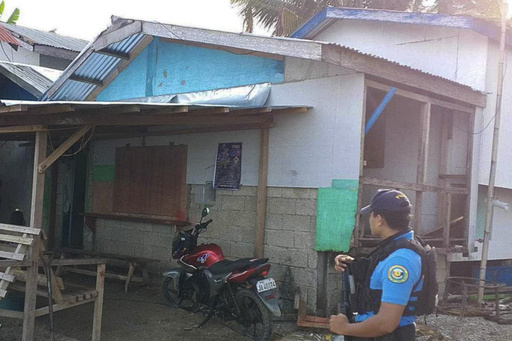
Philippine authorities have announced the arrest of three individuals connected to the kidnapping of an American citizen in the southern region of the country, revealing that the victim is believed to still be alive despite suffering a gunshot wound during the incident.
The abduction of 26-year-old Elliot Onil Eastman took place on October 17 in Sibuco, located in Zamboanga del Norte province. According to police reports, two suspects voluntarily surrendered at different locations and implicated a third individual, who was subsequently apprehended in Sibuco.
Police have identified three additional suspects who may still be in custody of Eastman, suggesting that there could be more accomplices involved in this case. Formal abduction charges were filed against these six individuals on Tuesday. “We are optimistic that he is still alive, and our search operations are ongoing,” stated police spokesperson Lt. Col. Helen Galvez. She reaffirmed their commitment to continue the effort until they successfully locate the victim.
Authorities have commenced house-to-house searches in an undisclosed area, as Galvez confirmed that the suspects are affiliated with a criminal organization rather than any of the notorious armed Muslim rebel factions known for a history of ransom kidnappings in the region.
Initial investigations revealed that the assailants, disguised as police officers and armed with M16 rifles, assaulted Eastman as he attempted to escape. A witness reported that one of the kidnappers shot him in the leg before forcibly taking him away in a motorboat. Investigators discovered bullet casings at the scene and blood stains in Sibuco, where Eastman had resided for approximately five months prior to his abduction.
Originally from Vermont, Eastman had left the Philippines briefly but returned to celebrate his Filipino wife’s graduation. He had been active on social media, posting videos about his life in the impoverished coastal town of Sibuco, making it easy for the suspects to locate him, as noted by Galvez. “He stood out as the only foreigner there,” she added.
While local law enforcement officials describe this kidnapping as an isolated incident in an otherwise tranquil area, it serves as a stark reminder of the ongoing security challenges faced in the southern Philippines, home to a significant Muslim minority within the predominantly Roman Catholic nation.
The region is endowed with abundant natural resources yet has struggled with severe poverty and a complex landscape of insurgent groups and criminals. A peace agreement established in 2014 with the Moro Islamic Liberation Front, the largest Muslim separatist group, has significantly decreased the intensity of conflicts. However, sporadic violence remains, although relentless military campaigns have diminished the influence of smaller factions—such as the notorious Abu Sayyaf—reducing the frequency of kidnappings and attacks that once plagued the area.
Historically, Abu Sayyaf has targeted American citizens and other Western expatriates, with many hostages ultimately released after ransoms were negotiated. Tragically, some victims have been killed during these kidnappings, including American Guillermo Sobero, who was beheaded, and U.S. missionary Martin Burnham, who was killed during a rescue attempt in 2002 while trying to save him and his wife.
